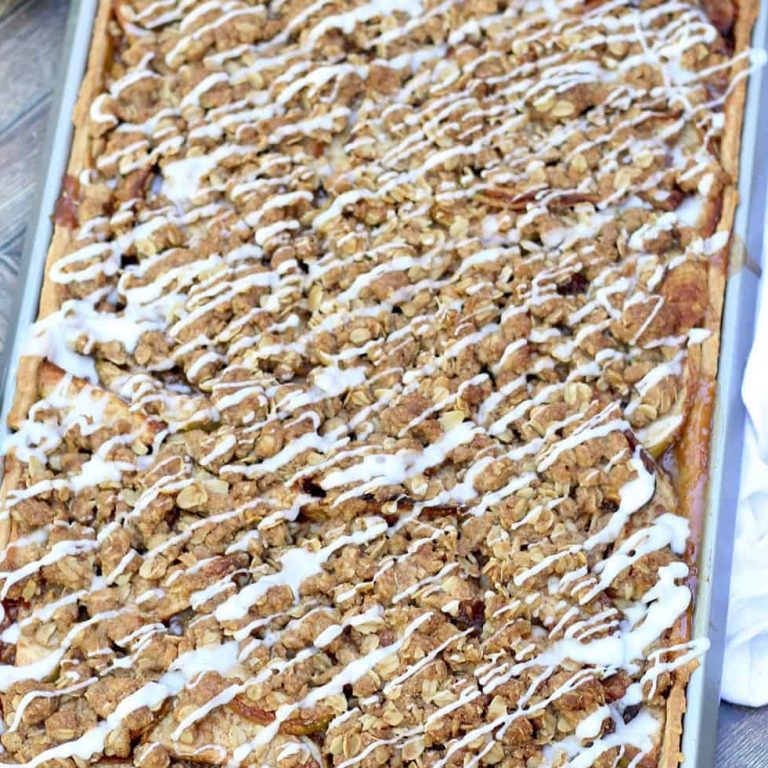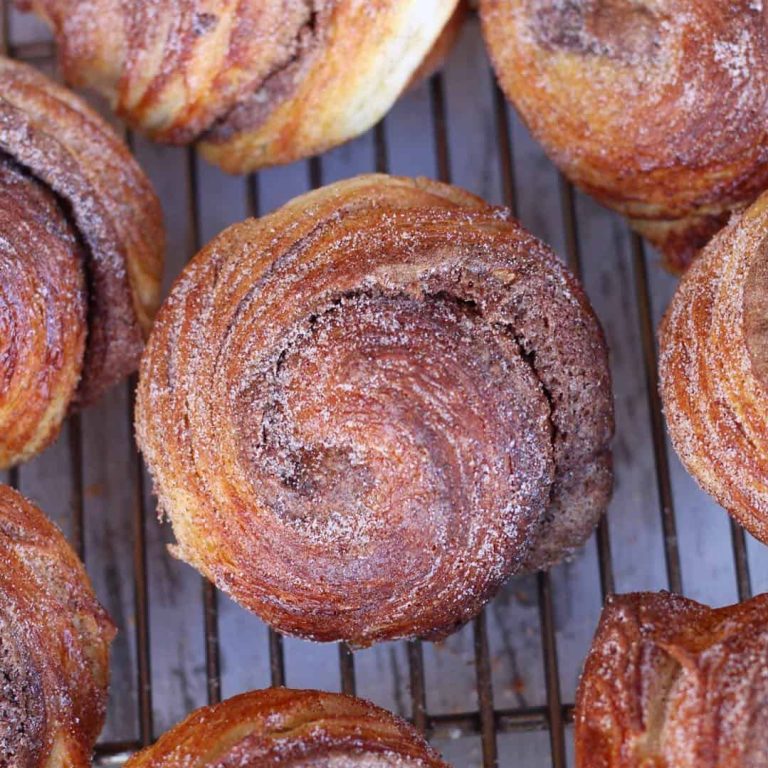Gluten Free Pie Crust Recipe
When I wrote the outline for my first cookbook, 175 Best Mini Pie Recipes, my publisher insisted that the content include a gluten free pie crust recipe. I couldn't argue. At the time, I wasn't at all familiar with gluten free baking. So, I got to work researching which ingredients and methods yielded the perfect from scratch gluten free pie crust. This recipe is the result of that work.....and lots of butter!

You will love this gluten free pie crust recipe (even if you're not gluten free!)
Easy to shape
One thing that I fell in love with about gluten free pie crust dough is the fact that it retains its shape so well. The absence of gluten means that there is less elasticity in the dough. So when you re-roll the scraps, the dough doesn't shrink back as it sometimes does with traditional pie dough.
I've used this dough for standard 9-inch single and double crust pies, hand pies, pop tarts, mini pies.....even fried pies! Use it interchangeably with your favorite wheat based pie crust dough.
Great buttery flavor
This is an all-butter pie crust dough, featuring a generous 8 ounces (2 sticks) of cold butter. The crust bakes up golden brown with a rich, slightly sweet buttery flavor and a crisp , flaky texture.

Video tutorial: Watch my gluten free pie crust come together from start to finish
Ingredients and special equipment

Specialty gluten free ingredients
You can find these ingredients in the baking aisle or the special foods aisle of your grocery store.
Brown rice flour
Brown rice flour is milled from whole brown rice grains, including the bran and germ. This means that it retains more of the nutrients and fiber found in the whole grain.
It has a slightly nuttier flavor and a coarser texture compared to white rice flour. Brown rice flour can be used as a thickener for sauces and gravies in addition to using for baked goods.
Sweet rice flour
Sweet rice flour, also known as glutinous rice flour or, is a starchy flour made from glutinous rice, which is different from regular long-grain or short-grain rice. Despite its name, glutinous rice is gluten free, and the term "glutinous" refers to its cohesive texture when cooked.
Potato starch
Potato starch is a fine white powder that is extracted potatoes. It is naturally gluten-free and can be used in gluten free baking to improve the texture of baked goods.
Tapioca starch
Tapioca starch is used in gluten free baking to improve the texture of baked goods. It can add chewiness, moisture, and structure to gluten free bread, pastries, cakes, and cookies.
Xanthan gum
In gluten free baking, xanthan gum is often used as a substitute for the binding properties of gluten. It helps give structure and elasticity to gluten free baked goods.





Other ingredients
Butter
Use very cold unsalted butter for this recipe. This will yield a crust that is consistently flaky and tender.
Eggs
In addition to the xanthan gum, egg yolks are helpful in adding structure to gluten free pie crust dough and preventing a crumbly dough.
Cider vinegar
Cider vinegar helps to create a tender crust. Red wine or white wine vinegar may be substituted.
Cold water
Similar to the butter, it is important that your water is VERY cold when added to the dough.
Sugar and salt
Special equipment
Rolling pin
You may use any standard rolling pin for this recipe, but my favorite type is called a French rolling pin. Unlike traditional rolling pins, which are cylindrical and have handles on either end, a French rolling pin is a long, slender, and tapered rod without handles.
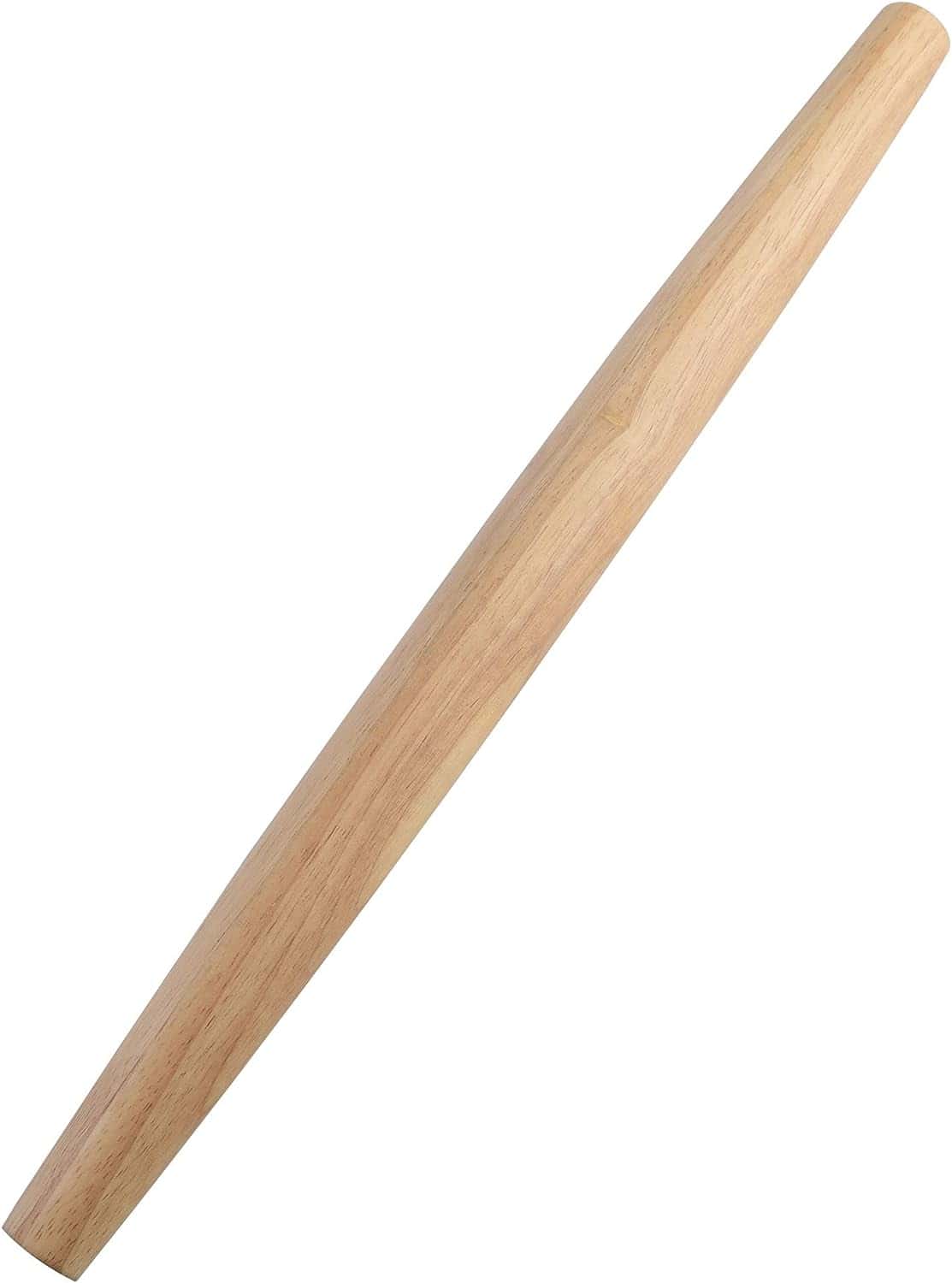
Food processor
If you don't have a food processor to cut your butter into the dough, you can use a pastry blender to two knives. See the Troubleshooting section, below, for details!
Step by step photos and instructions


- In the work bowl of a food processor fitted with the metal blade, pulse brown rice flour, sweet rice flour, potato starch, tapioca starch, xanthan gum, sugar and salt to combine. (See Troubleshooting section, below, for alternative methods if you don't have a food processor.)
- Scatter butter pieces overtop of the mixture, add the lid, and pulse the food processor several times, until the butter pieces are the size of peas. Transfer the mixture to a medium bowl.


3. In a small bowl, whisk together the egg yolks, ice water and cider vinegar. Drizzle half of the water mixture over the flour mixture and mix it with a fork until incorporated.

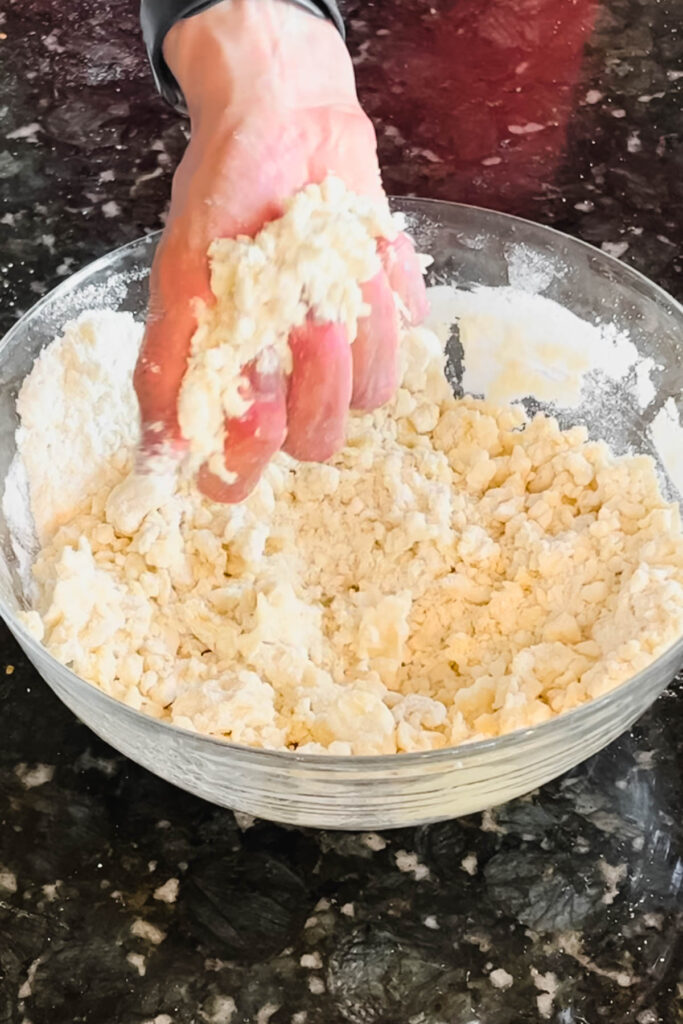
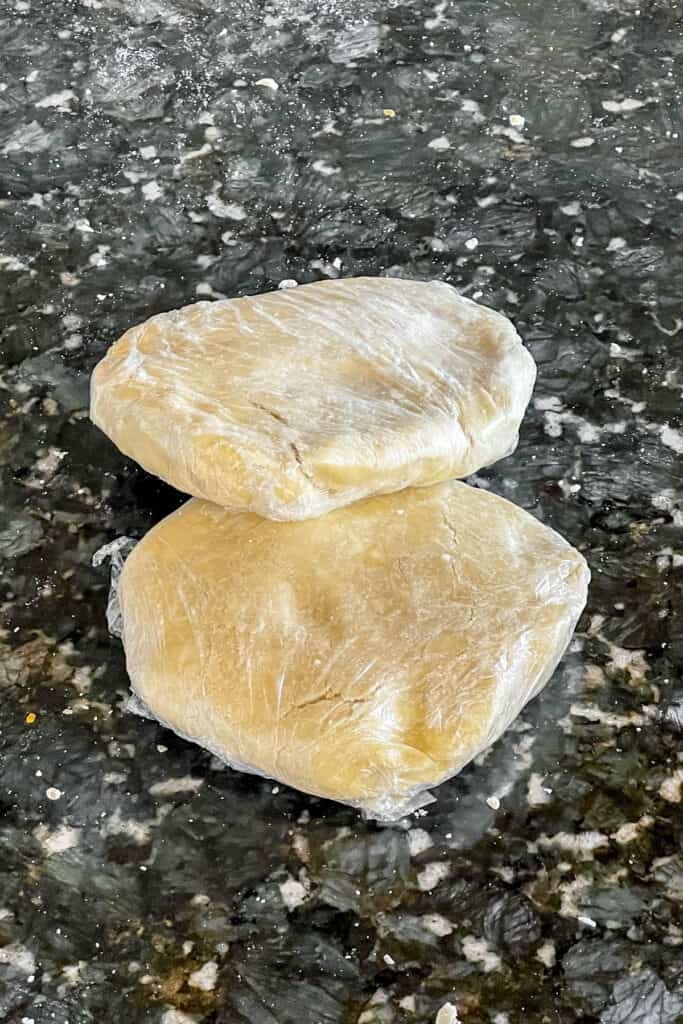
4. Add more of the water mixture, 1 tablespoon (15 ml) at a time, mixing after each addition, until the dough begins to hold together in moist clumps. You might not need all of the mixture.
5. Divide the dough in half and transfer each half to a large piece of plastic wrap. Shape each half into a ball. Flatten each ball into a disk and wrap each disk tightly in plastic.
6. Refrigerate dough for at least one hour and up to two days before using.


Rolling out dough
- Dust your work surface with additional rice flour (either one), potato starch or cornstarch to prevent sticking. Alternatively, place one (unwrapped) piece of dough between two sheets of parchment paper before rolling.
- Using your rolling pin, roll the chilled dough out evenly to about a ⅛ inch (3 mm) thickness.



3. If you are making mini pies or tartlets, cut out rounds to fit the size indicated in your recipe.


If you are making a whole large single or double crust pie, transfer the crust to the pie plate per your recipe instructions.



Troubleshooting your gluten free pie crust
If you don't have a food processor, you can mix the fat into the dough by hand. For this method, it is best to use a pastry cutter made from wire or sturdy metal blades. After combining the dry ingredients in a large bowl, sprinkle the cubed fat (butter, shortening, cream cheese of vegan butter) overtop of the mixture. Using the pastry cutter, work the fat into the flour by repeatedly pressing down and turning the blades until the fat is the size of peas.
You can alternatively "cut" the fat into the flour mixture using two knife and repeatedly cutting the pieces down to size.
Because they can become rancid very quickly, store gluten free flours in an airtight container in the refrigerator or freezer after opening.
A gluten-free pie crust can be more challenging to work with than a wheat-based crust as it lacks gluten, a protein that provides elasticity to baked goods. Here are some ways to prevent a crumbly crust:
Xanthan Gum: Many gluten-free recipes call for the addition of xanthan gum to mimic the binding properties of gluten. If your recipe doesn't include a binder, your crust may crumble.
Hydration: Too little liquid in your crust can make it dry and crumbly. Be sure to follow your recipe's instructions for the proper ratio of liquid to flour.
Fat Content: Fat is essential for a tender and flaky crust. Ensure you're using enough fat and that you properly distribute it through the flour mixture.
Chilling: After mixing the dough, chill it in the refrigerator before rolling it out. This helps the fat solidify and makes the dough easier to work with.
Depending on how long the dough has been chilling, it may be helpful to let it sit at room temperature for 10 minutes to soften slightly. This will make it easier to roll out. Ensure that you work surface is clean and cool. Have extra flour or an appropriate gluten free substitute on hand for dusting the work surface to prevent sticking.

Ready to turn this gluten free pie crust into a gluten free pie? Try it with some of these recipes:
- Cinnamon Sugar Pie Crust "Chips"
- Chocolate Bananas Foster Pudding Pie
- Butternut Squash, Caramelized Onion and Gruyere Tart
Tried this recipe and loved it? Take a photo and tag me on Instagram or give it a review!

Gluten Free Pie Crust
Equipment
- 1 food processor optional
- 1 Rolling Pin
Ingredients
- 1½ cups finely ground brown rice flour (see Ingredients section in post)
- ⅔ cup sweet rice flour
- ⅔ cup potato starch
- 6 tablespoon tapioca starch
- 1 teaspoon xanthan gum
- 1 tablespoon granulated sugar
- 1 teaspoon kosher salt
- 8 oz cold unsalted butter, cubed
- 2 large egg yolks
- ½ cup ice water
- 2 teaspoon cider vinegar
Instructions
- In the work bowl of a food processor fitted with the metal blade, pulse brown rice flour, sweet rice flour, potato starch, tapioca starch, xanthan gum, sugar and salt to combine. (See Troubleshooting section, above, if you don't have a food processor.)
- Scatter butter pieces overtop of the mixture, add the lid, and pulse the food processor several times, until the butter pieces are the size of peas. Transfer the mixture to a medium bowl.
- In a small bowl, whisk together the egg yolks, ice water and cider vinegar. Drizzle half of the water mixture over the flour mixture and mix it with a fork until incorporated.
- Add more of the water mixture, 1 tablespoon (15 ml) at a time, mixing after each addition, until the dough begins to hold together in moist clumps. You might not need all of the mixture.
- Divide the dough in half and transfer each half to a large piece of plastic wrap. Shape each half into a ball. Flatten each ball into a disk and wrap each disk tightly in plastic.
- Refrigerate dough for at least one hour and up to two days before using.
Rolling Out the Dough
- Dust your work surface with additional rice flour (either one), potato starch or cornstarch to prevent sticking. Alternatively, place one (unwrapped) piece of dough between two sheets of parchment paper before rolling.
- Using your rolling pin, roll the chilled dough out evenly to about a ⅛ inch (3 mm) thickness.
- If you are making mini pies or tartlets, cut out rounds to fit the size indicated in your recipe. If you are making a whole large single or double crust pie, transfer the crust to the pie plate per your recipe instructions.
Video
Notes
- Pie crust dough can be frozen, tightly wrapped, for up to one month. Thaw overnight in the refrigerator before using.
- This recipe makes enough for one double-crust pie crust, two single crust pie crusts, or 12-24 mini pies.
- If you want to use a pre-made gluten-free flour blend instead of making the dough from scratch, use 3 cups in place of the rice flours, tapioca starch, potato starch and xanthan gum.
